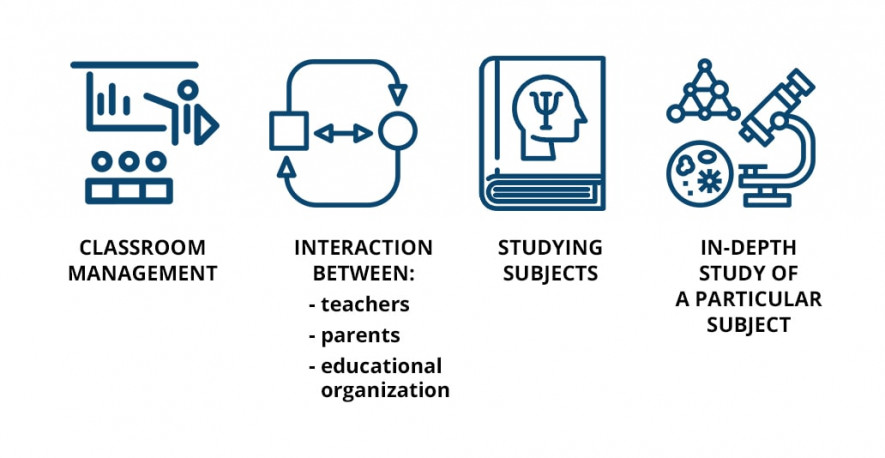E-learning Software: how win the market?
by Emma Dallas | January 17, 2019 8:12 am
Blackboard replaced by LCD monitor, mouse instead of chalk, virtual field trips on a History lesson – somewhat hard to imagine, right? Such a future is much closer than we can imagine. Since 1999 when the ‘e-learning’ term was used at the CBT seminar, this technology goes on scoring points.
In 2018 the global revenue of the e-learning software market equaled 183.5 billion U.S. dollars and is predicted to make it 243 billion dollars in 2022. There are many factors that influence the popularity of a certain software in the learning process. Among the education software market trends there are:
There are many factors that influence the popularity of a certain software in the learning process. Among the education software market trends there are:
- The growing focus on wearable technology
- Rising demand for game-based learning
- Increase in the integration of apps[1]
Having analyzed the market, we can distinguish the most popular types of education applications. They are usually developed for:
There are no doubts that such applications are multifunctional and useful for the target audience. Nevertheless, statistics show that more than half of all the software project fail because of various reasons. What are these reasons when speaking about e-learning applications?
These issues make the e-learning software fail
QaTestLab[2] specialists share their experience in testing e-learning applications and name the most common problems that occur while using this kind of software:
- problems with app’s operation under the conditions of no / slow Internet connection
- troubles connected with transferring progress from one mobile device to another
- issues concerning the progress display after relogin
- invalid hints and instructions displayed for a new user when logging in on the second device
- incorrect scoring/points calculation in a game or for several games
- displays of level instructions at inappropriate levels
- visual bugs connected with multitap
- full or partial inaccessibility of course content in the offline mode after the course has been preloaded on the device
- incorrect display of the course progress
- display of the exercise/task as completed when the goal has not been fully achieved
How to improve the quality of e-learning software?
Realizing the problem is half of the way to its solving. Another half is not to ignore this problem and find ways to improve the quality of the application for education. We offer you possible solutions:
- review your e-learning app with a fresher perspective
- improve the learning content frequently and consistently
- perform a continuous and thorough testing of your software
Professional testing is the means that defines even the most common bottlenecks and masked issues[3] of the e-learning application. If you have chosen this solution, here are the key testing types that should be performed for your software:
- performance/load testing – to check if your application responds quickly, is able to handle a big number of simultaneous users and to remain steady under different loads
- functional testing – to test the sequence of the displayed content and to ensure that users can take advantage of the full functionality of your product
- compatibility tests – to make sure that the application runs properly on multiple devices, OSs, browsers thus attracts more users
- UX/usability testing – to examine that the application is convenient for the end-users, if they can understand and make use of all the system parameters
Concluding Thoughts
The current and continuous growth on the market of e-learning software proves that this sphere is rather promising and presents numerous opportunities for the successful project start. These technologies are not equally presented and used in different countries which leaves much space for further integration. One of the main points on this way is the quality of the developed software which should be controlled at all stages of the application’s lifecycle. Users appreciate the product’s quality that is proven by professionals in this field.
Learn more from QATestLab
Related Posts:
- integration of apps: https://blog.qatestlab.com/2015/04/06/what-are-peculiarities-of-testing-2-tire-and-3-tire-applications/
- QaTestLab: https://qatestlab.com/
- masked issues: https://blog.qatestlab.com/2011/10/21/latent-and-masked-software-bugs-what-is-the-difference/
- QA Recipes for a Successful Automated Inventory Management Tool: https://blog.qatestlab.com/2022/09/28/inventory-management-testing/
- What to test for maximum productivity of logistics software: https://blog.qatestlab.com/2022/02/23/logistics-software-testing/
- How to create a competitive Nutrition App? QA is the answer: https://blog.qatestlab.com/2021/08/02/how-to-create-a-competitive-nutrition-app-qa-is-the-answer/
Source URL: https://blog.qatestlab.com/2019/01/17/effective-elearning-software/

